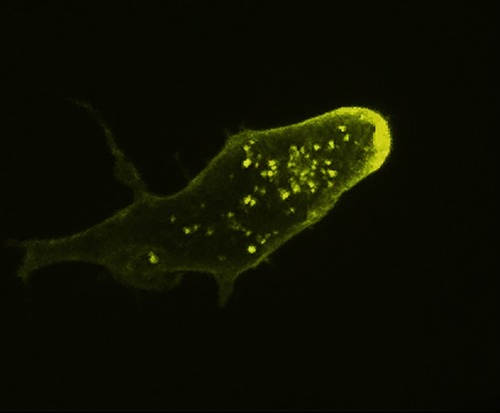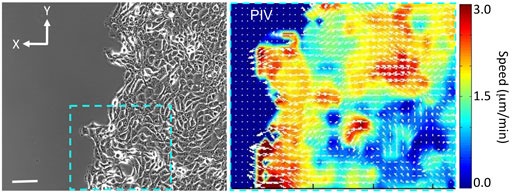The property of sensing and initiating directional migration in response to external cues is a fundamental property of biological systems. In metazoans, for instance, this behavior is essential for a variety of fundamental processes including embryogenesis, adult tissue homeostasis, inflammation and immune responses, as well as metastatic invasion.
Our research program aims to understand how cells detect and respond to external chemotactic signals and, in particular, how the spatial and temporal relay of chemotactic signals between cells impact single and group cell migration. The cornerstone of our approach to studying this paradigm is the tagging of signaling protein effectors with the green fluorescent protein (GFP) to visualize where, when and how relevant cascades are activated in live cells. Along with several other experimental tools, the outcome of our live imaging efforts led us to propose novel mechanisms to explain how chemotactic gradients are transduced and amplified in simple and complex biological settings.
Our studies of chemotaxis involve three distinct model systems with complementary virtues: Dictyostelium discoideum, Mammalian neutrophils, and breast cancer metastatic cell lines.




